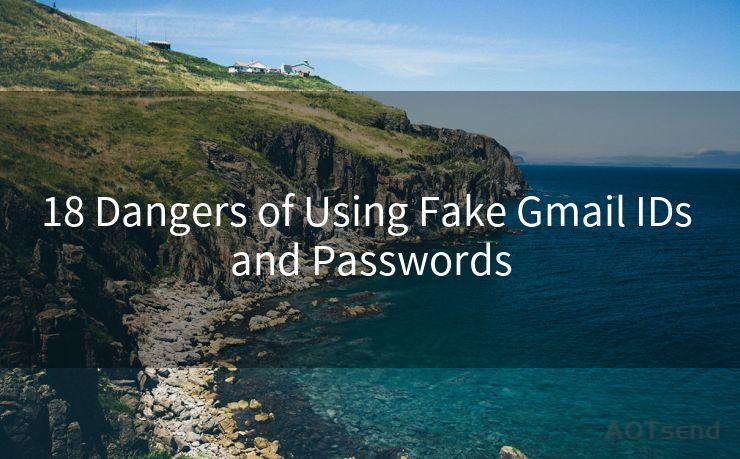16 DMARC in Email Best Practices




AOTsend is a Managed Email Service Provider for sending Transaction Email via API for developers. 99% Delivery, 98% Inbox rate. $0.28 per 1000 emails. Start for free. Pay as you go. Check Top 10 Advantages of Managed Email API
Email remains a crucial communication tool in today's digital world, but it's also a common target for cyber attacks. To mitigate these risks, it's essential to adopt best practices that enhance email security. One such practice is the implementation of DMARC (Domain-based Message Authentication, Reporting, and Conformance). In this blog, we'll explore the top 16 DMARC best practices for email security.
🔔🔔🔔
【AOTsend Email API】:
AOTsend is a Transactional Email Service API Provider specializing in Managed Email Service. 99% Delivery, 98% Inbox Rate. $0.28 per 1000 Emails.
AOT means Always On Time for email delivery.
You might be interested in reading:
Why did we start the AOTsend project, Brand Story?
What is a Managed Email API, Any Special?
Best 25+ Email Marketing Platforms (Authority,Keywords&Traffic Comparison)
Best 24+ Email Marketing Service (Price, Pros&Cons Comparison)
Email APIs vs SMTP: How they Works, Any Difference?
1. Understanding DMARC
DMARC is a technical specification that helps domain owners protect their email domains from spoofing and phishing attacks. It builds upon existing email authentication protocols like SPF (Sender Policy Framework) and DKIM (DomainKeys Identified Mail) to provide a framework for reporting and handling unauthenticated emails.
2. Implementing SPF and DKIM
Before adopting DMARC, it's crucial to have SPF and DKIM properly configured. These protocols help authenticate the sender's identity and ensure the integrity of the email content.
3. Defining a DMARC Policy
The DMARC policy is set in the DNS records of a domain. It specifies how receivers should handle unauthenticated emails claiming to be from that domain.
4. Starting with a Monitoring Policy
When first implementing DMARC, it's recommended to start with a monitoring-only policy (p=none). This allows domain owners to collect data on unauthenticated emails without rejecting them.
5. Analyzing DMARC Reports
Regularly analyze DMARC reports to identify sources of unauthenticated emails. These reports provide valuable insights into potential security issues.
6. Gradually Transitioning to a Reject Policy
Once you have a good understanding of your email traffic patterns, gradually move towards a reject policy (p=reject) to block unauthenticated emails.
7. Keeping DNS Records Up to Date
Maintain accurate and up-to-date DNS records for SPF, DKIM, and DMARC to ensure their effectiveness.
8. Educating Users on Email Security
User education is key to preventing phishing attacks. Train employees to recognize suspicious emails and report them.
9. Using Secure Email Gateways
Implement secure email gateways that support DMARC and can filter out unauthenticated emails before they reach users' inboxes.

10. Monitoring Third-Party Senders
If you use third-party email senders, ensure they comply with your DMARC policy to avoid unauthenticated emails.
11. Handling Forwarding Services
Be aware that email forwarding services can affect DMARC authentication. Configure them properly or consider alternatives.
12. Regular Auditing and Testing
Conduct regular audits and tests to ensure your DMARC implementation is effective and identify any potential gaps.
13. Responding to Failed Authentication Attempts
Have a clear process for responding to failed authentication attempts, including investigating the cause and taking corrective action.
14. Staying Updated on Email Security Trends
Keep up with the latest email security trends and threats to adapt your DMARC strategy accordingly.
15. Collaborating with Partners and Vendors
Collaborate with partners and vendors to ensure they understand and comply with your DMARC policy.
16. Continuously Improving Email Security Practices
DMARC is just one part of a comprehensive email security strategy. Continuously evaluate and improve your practices to stay ahead of evolving threats.
By following these 16 DMARC best practices, you can significantly enhance your email security and protect your organization from spoofing and phishing attacks. Remember, email security is an ongoing effort, and staying vigilant is key to maintaining a robust defense against cyber threats.




AOTsend adopts the decoupled architecture on email service design. Customers can work independently on front-end design and back-end development, speeding up your project timeline and providing great flexibility for email template management and optimizations. Check Top 10 Advantages of Managed Email API. 99% Delivery, 98% Inbox rate. $0.28 per 1000 emails. Start for free. Pay as you go.
Scan the QR code to access on your mobile device.
Copyright notice: This article is published by AotSend. Reproduction requires attribution.
Article Link:https://www.aotsend.com/blog/p6854.html











